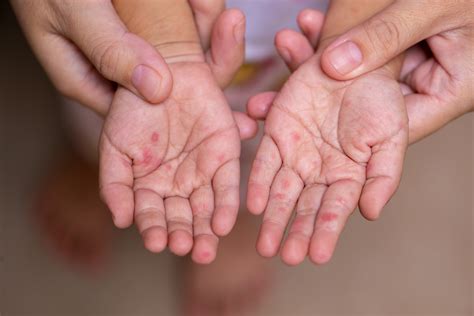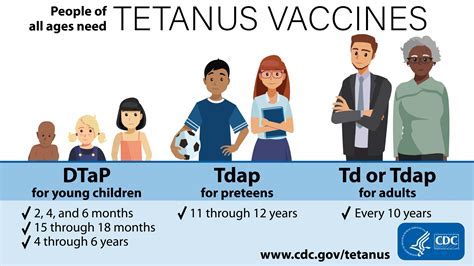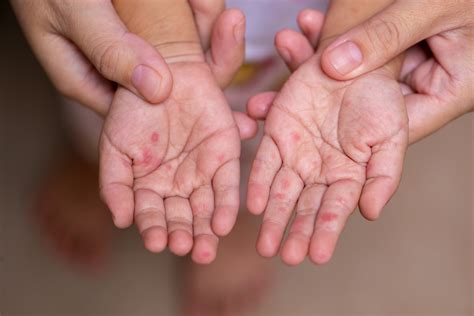Intro
Discover 5 ways to manage Hand Foot Mouth disease, including symptoms, treatment, and prevention methods, to help alleviate painful sores, reduce fever, and minimize contagion risk for a speedy recovery.
The importance of understanding and addressing Hand, Foot, and Mouth Disease (HFMD) cannot be overstated, particularly for parents, caregivers, and individuals who work closely with children. This highly contagious and common viral illness can spread quickly, causing discomfort, pain, and distress for those affected. As we delve into the world of HFMD, it becomes clear that knowledge is power, and being informed about the causes, symptoms, treatment options, and prevention strategies can make a significant difference in managing and mitigating the impact of this disease.
Hand, Foot, and Mouth Disease is characterized by its distinctive symptoms, which include sores in the mouth and a rash on the hands and feet. While it most commonly affects children under the age of 10, adults can also contract the virus, especially if they have close contact with an infected individual. The virus responsible for HFMD can spread through various means, including direct contact with an infected person, contaminated surfaces, and even through the air when an infected person coughs or sneezes. Understanding these transmission methods is crucial for preventing the spread of the disease.
The impact of HFMD extends beyond the physical symptoms, as it can also cause significant distress and disruption to daily life, particularly for families with young children. Parents and caregivers often find themselves seeking advice and guidance on how to soothe the symptoms, prevent the spread of the disease, and navigate the challenges of caring for a child with HFMD. As we explore the topic further, we will discuss the key aspects of Hand, Foot, and Mouth Disease, including its causes, symptoms, treatment options, and prevention strategies, providing valuable insights and practical tips for those affected by this common viral illness.
Understanding Hand Foot and Mouth Disease

To effectively manage and prevent HFMD, it is essential to understand the underlying causes of the disease. Hand, Foot, and Mouth Disease is typically caused by coxsackievirus A, which belongs to the picornavirus family. This virus is highly contagious and can spread quickly, especially in environments where people are in close proximity, such as schools, daycare centers, and households. The virus can also be spread through contaminated food and water, as well as through contact with contaminated surfaces.
Symptoms of Hand Foot and Mouth Disease
The symptoms of HFMD can vary in severity, but common signs include: * Sores in the mouth, which can be painful and may make eating and drinking uncomfortable * A rash on the hands and feet, which can be red and may blister * Fever, which can range from mild to high * Loss of appetite * Irritability and fatigue It is essential to recognize these symptoms early on, as prompt treatment and prevention measures can help alleviate discomfort and reduce the risk of complications.Treatment Options for Hand Foot and Mouth Disease

While there is no specific cure for HFMD, various treatment options can help alleviate symptoms and support recovery. These may include:
- Over-the-counter pain relievers, such as acetaminophen or ibuprofen, to reduce fever and ease pain
- Topical creams or gels to soothe mouth sores
- Cold compresses or warm baths to reduce discomfort and itching
- Plenty of rest and hydration to help the body recover In some cases, antiviral medications may be prescribed to help manage symptoms and reduce the risk of complications.
Prevention Strategies for Hand Foot and Mouth Disease
Preventing the spread of HFMD is crucial, especially in environments where people are in close proximity. Effective prevention strategies include: * Frequent handwashing with soap and water, especially after using the bathroom, before eating, and after blowing your nose, coughing or sneezing * Avoiding close contact with individuals who are infected * Disinfecting surfaces and objects that may be contaminated with the virus * Avoiding sharing food, drinks, or utensils with others * Staying home from work or school if you are infected, to prevent spreading the disease to othersComplications of Hand Foot and Mouth Disease

In rare cases, HFMD can lead to complications, such as:
- Dehydration, which can occur if the individual is unable to eat or drink due to mouth sores
- Bacterial infections, such as strep throat or pneumonia, which can develop if the individual has a weakened immune system
- Viral meningitis, which is a rare but serious complication that can occur if the virus spreads to the brain and spinal cord It is essential to seek medical attention immediately if you or your child experiences any of these complications.
Managing Hand Foot and Mouth Disease in Children
For parents and caregivers, managing HFMD in children can be challenging. Some tips to help soothe symptoms and support recovery include: * Offering plenty of fluids, such as water, milk, or electrolyte-rich beverages, to stay hydrated * Providing a soft, bland diet, such as yogurt, mashed bananas, or applesauce, to reduce discomfort while eating * Using a cool mist humidifier to add moisture to the air and relieve congestion * Applying topical creams or gels to soothe mouth sores * Encouraging rest and relaxation to help the body recoverHand Foot and Mouth Disease in Adults

While HFMD is more common in children, adults can also contract the virus, especially if they have close contact with an infected individual. Adults with HFMD may experience more severe symptoms, such as:
- High fever
- Severe headache
- Sore throat
- Fatigue
- Muscle pain It is essential for adults to seek medical attention if they experience any of these symptoms, as prompt treatment can help alleviate discomfort and reduce the risk of complications.
Preventing the Spread of Hand Foot and Mouth Disease in Communities
To prevent the spread of HFMD in communities, it is essential to: * Implement effective hygiene practices, such as frequent handwashing and disinfecting surfaces * Encourage individuals to stay home from work or school if they are infected * Avoid close contact with individuals who are infected * Provide education and awareness about the disease, its symptoms, and its prevention By working together, we can reduce the spread of HFMD and protect vulnerable individuals, such as young children and those with weakened immune systems.Conclusion and Next Steps

In conclusion, Hand, Foot, and Mouth Disease is a common and highly contagious viral illness that can cause significant discomfort and distress for those affected. By understanding the causes, symptoms, treatment options, and prevention strategies, we can effectively manage and prevent the spread of HFMD. If you or your child has been diagnosed with HFMD, it is essential to seek medical attention and follow the recommended treatment plan. Additionally, by implementing effective hygiene practices and staying informed about the disease, we can reduce the risk of complications and protect vulnerable individuals.
We invite you to share your experiences and questions about Hand, Foot, and Mouth Disease in the comments below. Your input and feedback are valuable to us, and we look forward to hearing from you. If you found this article helpful, please share it with others who may benefit from this information. Together, we can work towards creating a healthier and more informed community.
What are the symptoms of Hand Foot and Mouth Disease?
+The symptoms of HFMD include sores in the mouth, a rash on the hands and feet, fever, loss of appetite, and irritability and fatigue.
How is Hand Foot and Mouth Disease spread?
+HFMD can be spread through direct contact with an infected person, contaminated surfaces, and through the air when an infected person coughs or sneezes.
Can adults get Hand Foot and Mouth Disease?
+Yes, adults can get HFMD, especially if they have close contact with an infected individual. Adults with HFMD may experience more severe symptoms, such as high fever, severe headache, and sore throat.
How can I prevent the spread of Hand Foot and Mouth Disease?
+To prevent the spread of HFMD, it is essential to implement effective hygiene practices, such as frequent handwashing and disinfecting surfaces, and to avoid close contact with individuals who are infected.
What are the complications of Hand Foot and Mouth Disease?
+In rare cases, HFMD can lead to complications, such as dehydration, bacterial infections, and viral meningitis. It is essential to seek medical attention immediately if you or your child experiences any of these complications.
